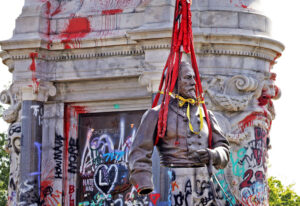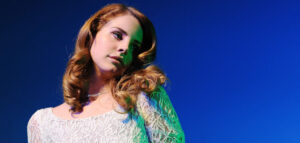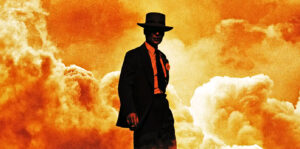On 11 August 1973, there was a party at an apartment building at 1520 Sedgewick Avenue in the Bronx. The host, Cindy Campbell, was a black immigrant teenager from Jamaica who wanted to earn some extra cash to buy back-to-school clothes. So she put up flyers around the neighbourhood, and convinced her 18-year-old brother Clive to DJ.
Known as DJ Kool Herc (a shortened version of his nickname, Hercules), Clive was locally famous for his physical size and strength and for a style of DJing that involved using multiple turntables and records to stitch together short, percussive passages of R&B music called “breaks” into extended loops of sound, a technique that he called “The Merry-Go-Round”. At his sister’s party, he cued up two copies of James Brown’s Sex Machine album and went back and forth, extending the break from “Give It Up or Turnit a Loose” while exclaiming street phrases over the music to encourage the dancers. And so, hip-hop was born.
As with most origin stories, the tale of how Kool Herc invented hip-hop is actually a set of clues that point in several directions at once. First, there is the fact that the Campbells were from Jamaica, where the practice of DJs rhyming over extended instrumentals had been part of the island’s musical culture since the Forties. By the late Fifties, “toasting”, or the art of boasting and telling stories over instrumentals and encouraging dancers, had become central to the fierce, island-wide competition between mobile sound systems sponsored by Kingston producers such as Duke Reid, Coxsone Dodd and King Tubby.
King Tubby, a protégé of Reid, showed a particular genius for taking the instrumental B-sides of R&B, ska and rocksteady records, and isolating and emphasising specific elements of the instrumentals and beats to create hypnotic music. As American R&B labels began to fade, reducing the supply of imported instrumental B-sides, Jamaican producers began to specialise in the production of original one-off instrumental recordings called dubplates which their DJs could toast and rhyme over. Arguably, then, hip-hop was simply a late American inner-city variant of a style of music that had originated in Jamaica at least two decades earlier.
Yet the realities of life in the Bronx in 1973 were equally important to the development of hip-hop. Jamaica was largely an island of farming towns where people gathered outside to listen to music. New York was a city of totemic skyscrapers caught in a seemingly irreversible spiral of crime, drugs and social decay. If the formal innovations that define hip-hop nearly all originated in Jamaica, the spirit and texture of the music clearly came from New York.
To grow up in New York City in the Seventies, as I did, was to experience the Biblical ten plagues on a more or less daily basis. There were rats everywhere, as city workers often failed to pick up the garbage. Alcoholics and drug addicts slumped against the sides of buildings in pools of their own urine. Playgrounds were littered with syringes, and later crack pipes. Summer evenings were regularly punctuated by gunfire, as police refused to get out of their cars. The terrifying rapidity of the city’s social breakdown sent around two million middle-class and professional residents, not all of them white, fleeing to the suburbs of New Jersey, Westchester, Connecticut and Long Island.
Those of us left behind — the city’s forgotten working class, elderly survivors of every type of historical trauma, ethnic minorities who refused to leave their neighbourhoods — adopted a kind of battle-scarred tolerance towards the state of permanent chaos that was apparently now our fate. If the city’s once-pristine and orderly facades were now covered in graffiti, it was possible to find beauty in what could be understood as a new art form. If the subway staircases lined with unconscious, half-naked bodies suggested a descent into hell, it was also fun to imagine how daring night-raiders had contorted their bodies into impossible shapes in order to spray-paint their names on the trains. Abandoned buildings were taken over by squatters and artists who used the energy of the streets to create in a new graffiti-influence vernacular that would become world-famous through the work of Keith Haring and Jean-Michel Basquiat. Clubs such as CBGB’s featured bands like The Ramones and Talking Heads who could easily find rehearsal spaces and pay rent while creating great new music. If the Seventies were one of the worst decades in the city’s history — socially, economically and criminally — they were also a time of undeniable creative ferment.
Yet the sense of danger, hopelessness and decay that pervaded the city was all too real. Along with the addicts and petty criminals, the streets were home to thousands of mentally ill people who became guinea pigs in a vast social experiment that liberated them from the oppression of state mental institutions to the “care” of communities that lacked any kind of infrastructure or funding to help them heal. Suburban flight cost the city tens of thousands of jobs, and devastated the city’s tax base.
The people hardest-hit by the city’s decline were the poor, especially the black poor, who lived in ghettos from which jobs and basic social services had disappeared. The only available sources of income in poorer city neighbourhoods were welfare payments or the drug trade. Public schools eliminated shop classes and music programmes, as city budgets no longer offered room for anything beyond teaching the basics and taking attendance. If being working-class or elderly in New York City in the Seventies meant running a menacing gauntlet of crime and decay, being poor and black was its own separate circle of hell.
Hip-hop was the music product of a world whose inhabitants had been forgotten but were no less human than anyone else in New York. It showcased a scavenger’s inventiveness in the face of deprivation, and a capacity for inventiveness and joy that the rest of the city had largely forgotten. If there were no more musical instruments or music teachers in the city’s public schools, kids could still make music in the parks with a pair of turntables and records that they bought for a dollar. The early stars of the music were the DJs with the best record collections and coolest breaks. The rappers were hype-men, who rhymed about their zodiac signs and moved the crowd.
There was more to the music, though. As new beats travelled from the Bronx, to Harlem, to Brooklyn, they became a kind of semaphore code that signalled first and foremost that the city was still alive. White kids travelled on the subways to uptown parks and clubs to hear the new music, while black DJs and performers migrated to downtown clubs, where they met the Talking Heads. Barriers of geography and race that had been raised even higher by budget cuts and the decay of the city’s social fabric and institutional structures began to come down. Break-dancers appeared on the subways and in parks in the hope of getting paid, spinning on their heads, popping their limbs, and performing other impossible-seeming feats, making themselves physically and psychically visible to their fellow New Yorkers as something other than likely muggers.
It is not my intention to recapitulate the entire history of hip-hop here. It is enough to say that in every decade since, someone has declared rap to be dead, only for the music to respond by generating new and bigger and arguably even more talented stars. The Eighties saw the rise of national acts like Run-DMC, LL Cool J, Rakim, the Beastie Boys and Public Enemy. In the Nineties, hip-hop’s centre of gravity moved to the West Coast, with the rise of gangsta rappers like NWA, Ice Cube, Dr. Dre, Snoop Dogg, and Tupac, a dancer from Baltimore who re-incarnated himself as the most fervent voice of LA’s brutal gang culture. The East Coast responded with Brooklyn’s Biggie Smalls, aka the Notorious B.I.G. (my personal nominee for the greatest rapper of all time), along with Nas, an artistic genius, Jay Z, a commercial genius, and the Wu Tang Clan, a collective of geniuses from Staten Island who fearlessly crossed hip-hop with everything from coke-addled scat singing to old kung-fu movies.
In the 2000s, Dr. Dre fathered Eminem, the white Elvis of rap, who sold more records than anyone else by marrying uniquely complex rhyme patterns with a bratty sense of humour that did more than his skin colour to help rap go pop. Eminem was followed by Jay Z’s old producer, Kanye West, hip-hop’s Mozart, who used his unique ear for sound and love of fashion to turn himself into hip-hop’s first global brand before being eaten alive by mental illness, which announced itself (to those who hadn’t been paying attention) in the form of antisemitic outbursts and his bizarre embrace of Nazi iconography. For each of these stars, there were dozens more who created new patterns out of words and sound, all of which referred back from one angle or another to DJ Kool Herc’s groundbreaking performance at his sister’s party.
Today, rap has secured its place alongside rock, country and pop in the American popular music pantheon with its own category at the Grammys, an outdated music awards show that no one watches. There are plenty of more recent rappers who do unique and original things with the form, such as Drakeo the Ruler, who was murdered in December 2021, and 03 Greedo, who is thankfully still alive. Stars such as Houston’s Travis Scott fill arenas while topping the pop charts.
Still, it was reasonable, until very recently, to see hip-hop as a 20th century cultural artefact that was gently ageing into oblivion. Anyone with a legitimate claim to having bobbed their head at jams in parks back in the day in Brooklyn, Queens or the Bronx is now pushing 60, which in pop-culture land is pretty much the equivalent of death. Snoop Dogg’s pop-culture partner is Martha Stewart. And while fans may still crowd arenas to hear an 81-year-old Paul McCartney sing and play bass, it is hard to imagine them doing the same for an 81-year-old Ghostface Killah, may he live long and prosper.
Yet on the 50th anniversary of its putative birth, hip-hop suddenly feels fresh again. In a culture in which free expression is increasingly marginalised and depicted as dangerous, even as criminal, hip-hop has proven to be the only native cultural form to successfully resist the sterility of the enforced monoculture that is strengthening its hold on the formerly glorious cacophony of American pop. What passes for American popular culture today is the product of a new regime which uses the tools of social pressure and censorship, combined with ever-more overt intrusions of political and bureaucratic power, to threaten anyone who refuses to conform. But no one can cancel hip-hop stars, because the spirit of the music won’t allow it — and neither will the fans. In a Puritan landscape of fearful, politically driven conformity, hip-hop sounds even more radically original and freedom-loving than it did when it was born.
The idea that hip-hop artists are the last real Americans may seem ironic. After all, they are predominantly urban and black, and spoke their truth in opposition to a dominant white political and musical culture. But anyone who thinks that the blackness is somehow outside the definition of “Americanness” doesn’t know much about either. Black culture is American culture, and hip-hop’s aesthetic, and the values it transmits, could not be more American.
It is the right of every American to invent themselves from scratch. It is the right of every American to not be defined by their given name, by the colour of their skin, or by the government, and to tell their own story in their own tongue. If you shoot at me, I will shoot back. These rights, whether they are written down in the Constitution or not, are what allow Americans in every generation to fashion a new language and new forms out of the materials at hand. That’s what being an American is about.
Today’s America is a country whose elites have turned their back on its foundational promises, preferring to preserve their fortunes while attempting to police and control a society whose size and energy makes them afraid. Hip-hop’s refusal to abide by this is the essence of the American spirit and the foundation of any free society. Which is how a musical form that was once defined as “the black CNN” came to speak for the vast majority of Americans, regardless of their skin colour or whether they were from Brooklyn or the Bronx. Hip-hop continues to speak its own truth, vastly enriching the American language, American music and American culture. This is why it will survive, in some form or another, for at least another 50 years. Happy birthday.
Disclaimer
Some of the posts we share are controversial and we do not necessarily agree with them in the whole extend. Sometimes we agree with the content or part of it but we do not agree with the narration or language. Nevertheless we find them somehow interesting, valuable and/or informative or we share them, because we strongly believe in freedom of speech, free press and journalism. We strongly encourage you to have a critical approach to all the content, do your own research and analysis to build your own opinion.
We would be glad to have your feedback.
Source: UnHerd Read the original article here: https://unherd.com/




